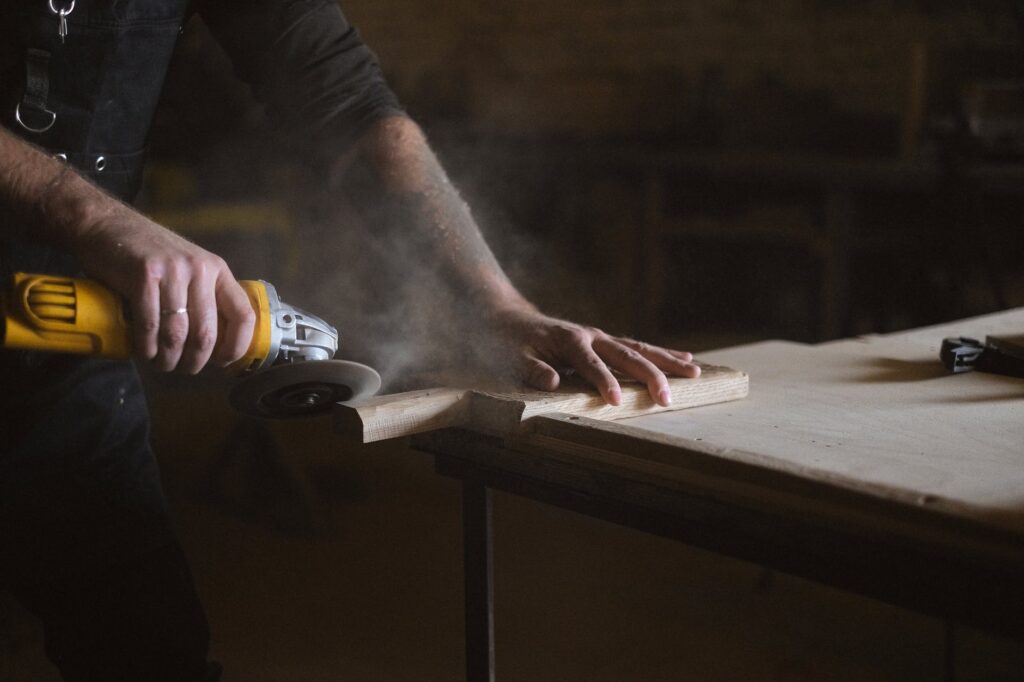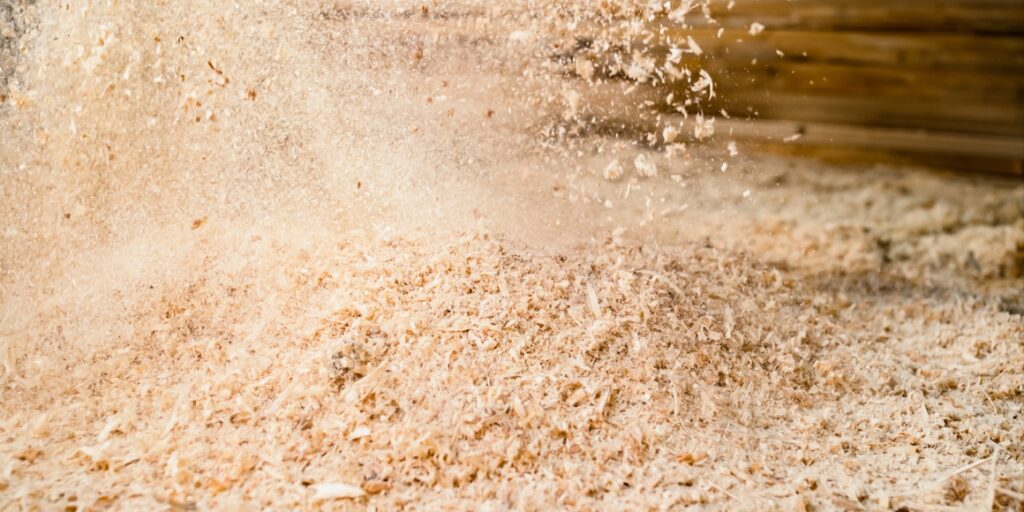R & B Industrial are in a unique position to be able to provide bespoke wood dust extraction systems including made to measure antistatic filters, bag collection units, and complete dust & fume extraction systems for your requirements.
Did you know that wood dusts are covered by the Control of Substances Hazardous to Health Regulations (COSHH 2002 ) because of the potential health problems.
What activities are likely to produce wood dust?
Wood dust is created during all stages of wood processing such as sawing, routing, sanding and other operations. Workers can also be exposed when the dust becomes airborne such as when removing dust from furniture, maintenance activities, or when cleaning equipment (e.g., emptying the bag from a dust extraction system or vacuum).

So why do I need to know this? and why is wood dust a health concern?
Exposure to wood dust has been associated with health issues due to the natural chemicals in the wood, or substances in the wood such as bacteria, moulds, or fungi.
Wood dust is considered carcinogenic according to the International Agency for Research on Cancer (IARC). IARC states that wood dust causes cancer of the nasal cavity (nose area) and paranasal sinuses (spaces in and around the nasal cavity) and of the nasopharynx (upper part of the throat, behind the nose).
Wood dust is also associated with toxic effects, irritation of the eyes, nose and throat, dermatitis, and respiratory system effects which include decreased lung capacity and allergic reactions.
The biggest risk is from fine dust, is that you can breathe this deep into your lungs where it will do the most damage. Fine dust will also spread further from the
cutting process so it is important to clean ledges and other workroom surfaces regularly to prevent dust accumulating. The fine particles are so small almost invisible to the human eye. As more and more people are doing more DIY and home woodworking projects it’s important that you know the potential harmful risks.
Potential Health risks
Wood dust is a substance hazardous to health because it can cause serious non-reversible health problems, including:
■ skin disorders;
■ obstruction in the nose, and rhinitis;
■ asthma
■ nasal cancer.
What are examples of the health issues associated with wood dust?
Irritation, coughing or sneezing are caused by the dust itself. Exposure to excessive amounts of wood dust may irritate the eyes, nose, and throat. Workers may also experience shortness of breath, dryness and sore throat, conjunctivitis (inflammation of the mucous membranes of the eye), and rhinitis (runny nose).
Dermatitis is common and may be caused by the chemicals in the wood. For dermatitis, the skin may become red, itchy, dry, or blister. Allergic contact dermatitis may also develop.
Respiratory system effects include decreased lung capacity, and allergic reactions in the lungs such as hypersensitivity pneumonitis (inflammation of the walls of the air sacs and small airways), and occupational asthma. Hypersensitivity pneumonitis may develop within hours or days following exposure and is often confused with cold or flu symptoms because it begins with headache, chills, sweating, nausea, breathlessness, etc. Tightness of the chest and breathlessness can be severe, and the condition can worsen with continued exposure. Some hypersensitivity pneumonitis conditions may be caused by moulds that grow on the wood (and by not the wood itself). Occupational asthma may also develop. Western red cedar is a wood that has a clear association with the development of asthma.
Toxic effects are specific to the species of wood. The chemicals in the wood may be absorbed into the body through the skin, lungs, or digestive system. When the body absorbs the chemical, the chemical may cause headaches, loss of weight, breathlessness, giddiness, cramps and irregular heartbeat.
What you need to know about workplace exposure limits?
Exposure limits
Both hardwood and softwood dusts have a Workplace Exposure Limit (WEL) which must not be exceeded.
The WEL for hardwood dust is 3mg/m3 (based on an 8-hour time-weighted average).
The WEL for softwood dust is 5mg/m3 (based on an 8-hour time-weighted average).
For mixtures of hardwood and softwood dusts the WEL for hardwood dust of 3mg/m3 applies to all wood dusts present in that mixture.
Adequate control of wood dust is achieved when:
- The eight principles of good control practice are applied as set out in Schedule 2A of COSHH;
- Exposure is below the relevant WEL; and
- Exposure is reduced to as low a level as is reasonably practicable.
Wood Dust Extraction
Provide dust extraction (also known as local exhaust ventilation or LEV) at woodworking machines to capture and remove dust before it can spread.
Design the extraction system to take into account:
- the number and type of machines to be connected to it, the ones that are used together and the layout of the workshop or factory. This information should be supplied by the user.
- the machine manufacturer’s information or an experienced body’s information on air flow and extraction cross-sectional areas or volume flow rates (VFR) required for each extraction connection for each machine.
Wood dust: Controlling the risks WIS23 (hse.gov.uk)

